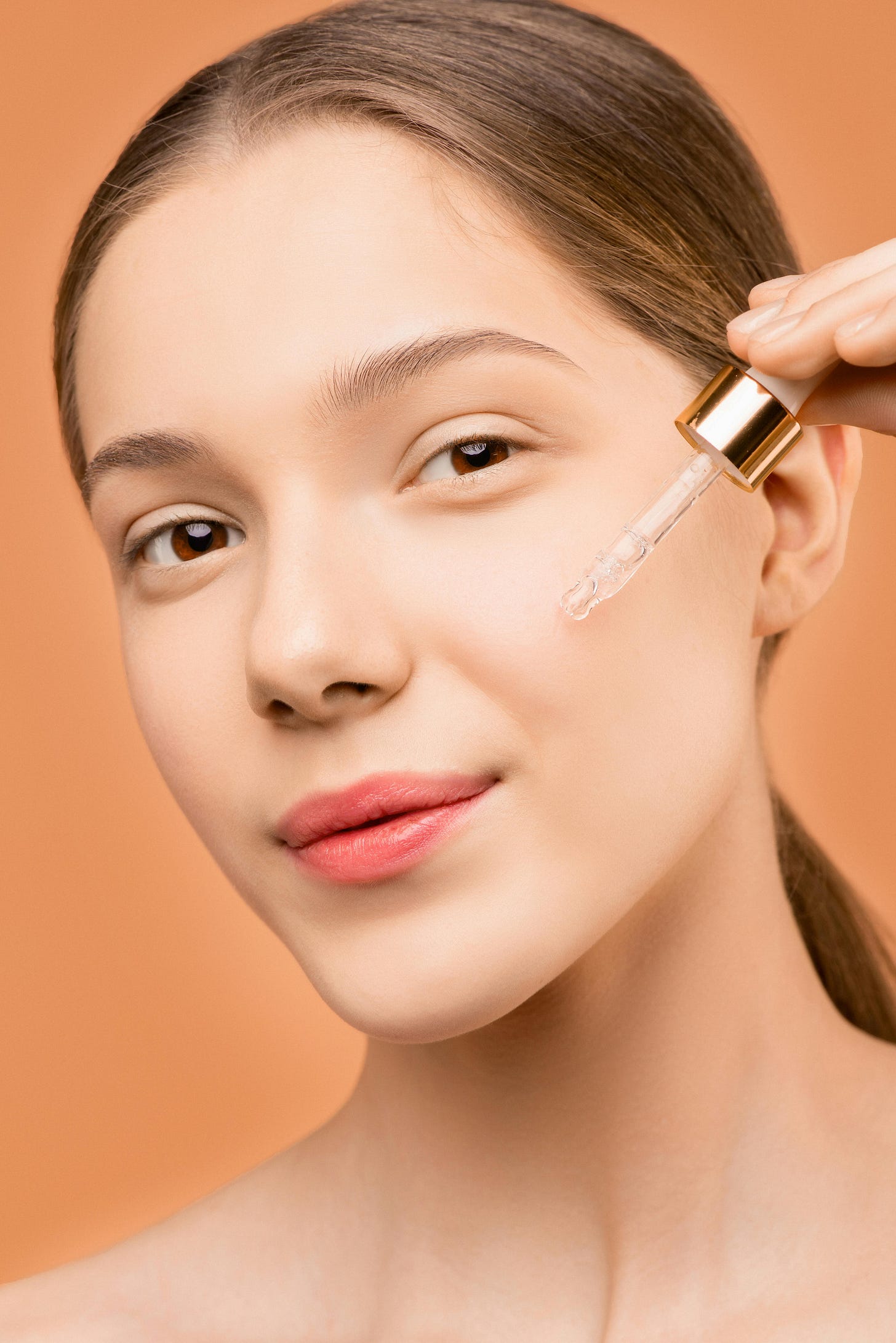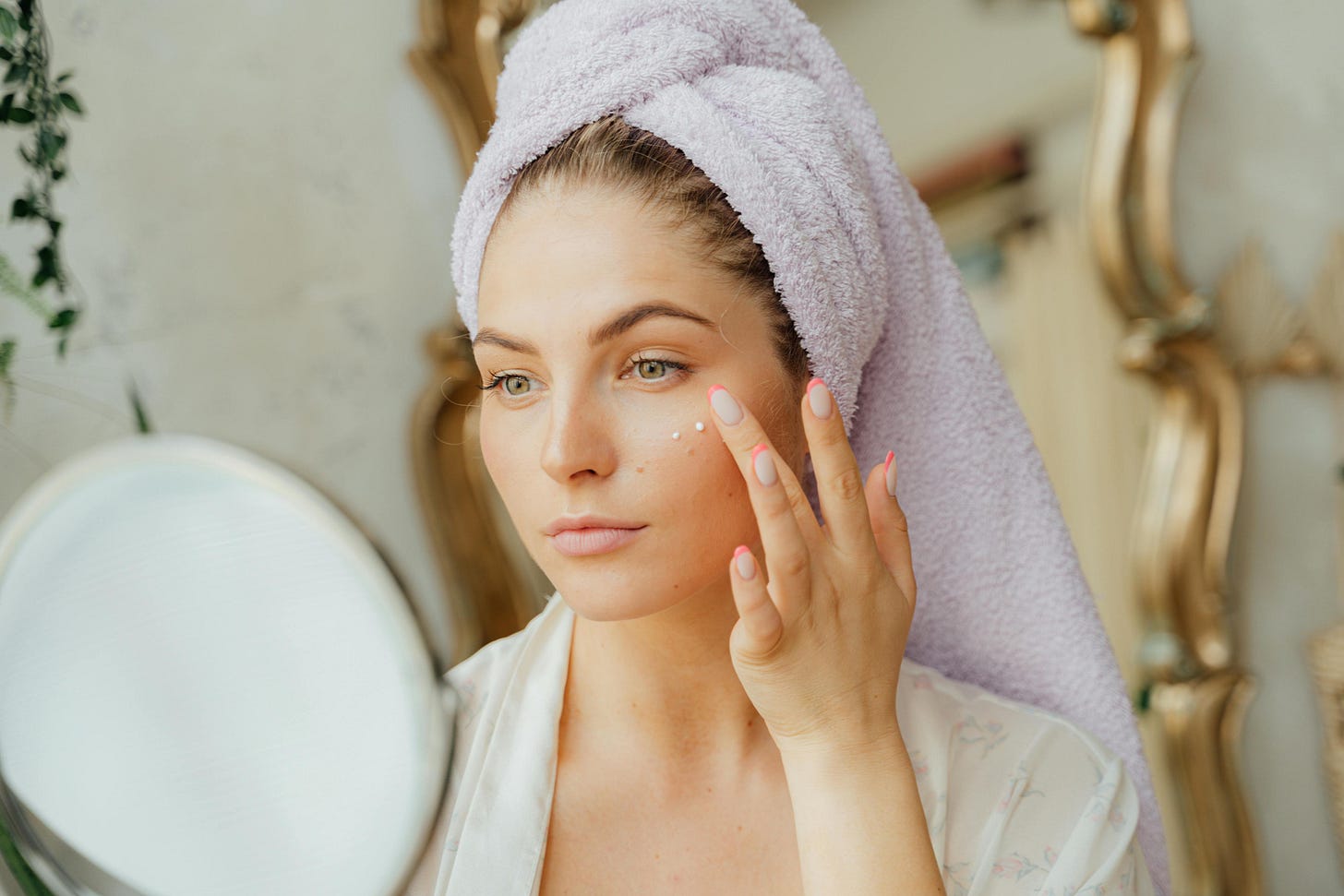Beginner's Guide to Retinol: 5 Tips You Can't Miss
On Navigating The World's Best Anti-Aging Treatments.
Ready to supercharge your skincare routine?
Retinol, adapalene, and tretinoin are powerhouse ingredients that can transform your skin, but only if used correctly.
Trust me, I’ve navigated the journey from acne woes to glowing skin (well . . . with a few bumps and scars and pimples here and there. Life is to be lived, right?)
I'm here to share five essential tips to get you started on the right foot.
Let’s dive into the science and practical steps to make these potent treatments work wonders for you.
1. Understand Retinol's Role
Retinol isn't a spot treatment; you need to view it as a long-term investment in your skin.
When I first dabbled in retinol, I was tempted to use it as a quick fix for breakouts.
However, retinol works by increasing cell turnover, which means it takes weeks, sometimes months, to see noticeable changes.
This slow but steady approach is crucial because it allows your skin to adapt to the new routine without overwhelming it.
By staying patient and consistent, you’ll see the long-term benefits of smoother, clearer skin emerge.
So, consistency is key with retinol. Using it sporadically won’t yield the same results as a regular application. Instead, incorporate it into your nightly routine (or at least 3 times per week and work your way up to nightly), and stick with it.
Over time, you’ll notice an improvement in texture, tone, and overall skin health.
For more insights on the transformative power of retinol, check out some of my other articles, such as FAQ: Does Retinol Thin Your Skin? and All About Anti-Aging: Retinol Part 1.
My advice: Embrace the journey. Retinol typically takes 3-6 months to show significant results because each cell cycle is about 28 days. Consistency and patience are your best friends here as the retinoid signals your body to build collagen and turn over cells.
2. Start with Low Frequency
In the beginning, less is more. I learned this the hard way when I used retinol every night and ended up with red, peeling skin.
Starting slow is crucial to avoid irritation. Begin by applying retinol just twice or three times a week and gradually increase the frequency as your skin builds tolerance.
This approach helps minimize irritation and allows your skin to adjust to the potent ingredient without overwhelming it.
As your skin adapts, you can slowly increase the frequency of application. If you experience any irritation, scale back and give your skin time to recover.
Remember, the goal is to incorporate retinol seamlessly into your routine without causing unnecessary stress to your skin.
This gradual introduction will set you up for long-term success.
My advice: Start slow and listen to your skin. Apply retinol twice a week for the first month. If your skin tolerates it well, increase to every other night in the second month, and eventually, nightly.
Heads up, retinol isn’t the only anti-aging tool in our arsenal. Vitamin C serums, copper peptides, and red light therapy can be excellent additions in your routine too. They certainly are in mine!
3. Pick the Right Formulation
I’ve learned not all retinoids are created equal as I’ve experimented with various forms—from over-the-counter retinol to prescription-strength tretinoin.
If you’re just starting out, opt for a milder form like retinol or retinaldehyde.
These are less irritating than stronger retinoids but still effective over time.
You’ll also want to look for products that also include soothing ingredients like niacinamide, glycerin, or bisabolol to help mitigate potential dryness or irritation.
Choosing the right formulation is crucial for your retinol journey.
If you have sensitive skin, you’ll want to start with a lower concentration and work your way up.
Products that combine retinol with moisturizing and calming ingredients can help your skin adjust more comfortably.
And of course, always patch-test a new product to ensure it suits your skin.
My advice: Start with a gentle formulation, such as 0.3% retinol, and monitor your skin’s reaction. Gradually increase the strength over 6-12 months as your skin becomes more tolerant.
Some of my favorite retinoids include:
For beginners: CeraVe Resurfacing Retinol Serum
For serious anti-aging: Medik8 Crystal Retinal
For acne: Adapalene 0.1
4. Protect Your Skin Barrier
Your skin barrier is your first line of defense, and retinol can compromise it if you’re not careful.
When I started using retinol, I made sure to sandwich it between hydrating layers.
Apply a gentle moisturizer before and after your retinol application.
This technique, known as the "retinol sandwich," helps protect your skin barrier and reduces the risk of irritation.
Additionally, you’ll want to consider wearing sunscreen during the day, as retinol makes your skin more sensitive to ultraviolet light.
A compromised skin barrier can lead to increased sensitivity and breakouts, so it’s essential to support it with hydrating and protective measures.
Your skin will thank you for the extra care and protection.
My advice: Always prioritize your skin barrier. Use a hydrating moisturizer before and after retinol application and consider using sunscreen as needed. Some of my favorites include:
Chemical: Naturium UV Reflect or Dew Glow Moisturizer SPF
Mineral: Hero Cosmetics Superlight SPF
Tinted: Supergoop GlowScreen SPF
Check out Discover Your Perfect SPF Match for more.
5. Be Aware of the Purging Phase
The dreaded purging phase can be discouraging, but it's a normal part of the retinol journey.
When I first incorporated retinol, my skin seemed to get worse before it got better.
This is because retinol accelerates the turnover of skin cells, bringing underlying congestion to the surface.
So, you’ll want to stick with it, and remember that purging typically lasts 4-6 weeks.
It’s important not to confuse purging with a reaction. If breakouts persist beyond two months or are excessively severe, I suggest consulting with a dermatologist.
They can help you determine if the product is right for you or if adjustments are needed.
Of course, understanding the difference between purging and a reaction can help you navigate this phase more confidently.
My advice: Stay the course and differentiate between purging and a reaction. If purging lasts more than six weeks, or if you’re experiencing severe irritation, consult a dermatologist to adjust your routine. Also, if acne is the issue you’re trying to solve, I suggest using adapalene instead of retinol and checking out my guide to getting rid of acne scarring.
The Bottom Line
Starting retinol, adapalene, or tretinoin can feel daunting, but with the right approach, you’ll unlock the secret to radiant, clear, ever-youthful skin.
But remember, skincare is a marathon, not a sprint. You can’t speed up the effects of retinol by using it every day as a beginner.
Biology is always going to beat you, and biology dictates your skin cell cycles.
By understanding the science, starting slow, choosing the right formulation, protecting your skin barrier, and staying patient through the purging phase, you'll set yourself up for success.
Cheers,








